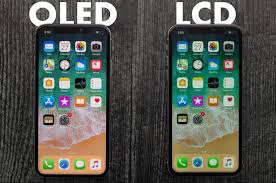
LCD vs. OLED Screens: The Future of iPhone Displays
As technology continues to evolve, Apple’s choice of display technology for its iPhone lineup has been a topic of significant interest. The debate between Liquid Crystal Display (LCD) and Organic Light-Emitting Diode (OLED) screens is particularly relevant, with many wondering if Apple will replace LCDs with OLEDs for all iPhones by 2025. To understand this potential shift, it’s crucial to examine the differences between these technologies and the implications for future iPhone models.
Table of Contents
Understanding LCD and OLED Technologies
LCD Technology
Liquid Crystal Displays (LCDs) are a well-established technology that uses liquid crystals sandwiched between two glass plates. An external backlight provides illumination through the liquid crystals, which control the amount of light that passes through each pixel. This results in bright, clear images, but with some limitations.
Advantages of LCD:
- Cost-Effectiveness: LCDs are generally less expensive to produce, which can keep device prices lower.
- Longevity: LCDs tend to have a longer lifespan and less risk of burn-in compared to OLEDs.
Drawbacks of LCD:
- Color Accuracy and Contrast: LCDs typically offer lower contrast ratios and less vibrant colors compared to OLEDs.
- Power Consumption: The backlight in LCDs is always on, which can result in higher power consumption, especially when displaying dark images.
OLED Technology
Organic Light-Emitting Diode (OLED) displays, on the other hand, use organic compounds that emit light when an electric current is applied. Each pixel in an OLED display is its own light source, meaning no backlight is needed.
Advantages of OLED:
- Superior Contrast and Color: OLEDs can produce true blacks and more vibrant colors due to their ability to turn off individual pixels.
- Energy Efficiency: OLED screens are more efficient with power, particularly when displaying dark images, because individual pixels can be turned off completely.
Drawbacks of OLED:
- Cost: OLED technology is generally more expensive to produce, which can increase the overall cost of devices.
- Burn-In Risk: Prolonged display of static images can lead to burn-in, where remnants of the image persist on the screen.
Apple’s Historical Choices and Trends

Historically, Apple has used LCD technology in its iPhones up until the iPhone X, which marked the company’s first foray into OLED with its Super Retina Display. Subsequent models, including the iPhone XS, 11 Pro, 12, and 13 series, continued to adopt OLED technology for higher-end models.
In contrast, Apple maintained LCD screens for its more budget-friendly models, such as the iPhone XR, iPhone 11, and iPhone SE (2022). This approach allowed Apple to offer a range of devices at various price points, balancing performance and cost.
The Case for a Complete OLED Transition
Technological Advancements
As OLED technology has matured, the cost of production has gradually decreased. Innovations in manufacturing processes and improvements in OLED materials have made it more viable for widespread use. Additionally, OLED screens offer benefits like better battery life and improved display quality, which align with Apple’s focus on premium user experiences.
Consumer Preferences
Consumer demand for high-quality displays has driven Apple’s transition towards OLED for its flagship models. As OLED screens become more common and affordable, Apple may see the benefits of extending this technology across its entire lineup.
Competitive Landscape
Competitors such as Samsung and Google have already embraced OLED screens for their entire range of devices. To maintain a competitive edge, Apple might find it advantageous to standardize OLED across all models.
Potential Challenges
Despite the advantages, transitioning all iPhones to OLED by 2025 could pose challenges. The increased cost of OLED production might affect the pricing of lower-end models, potentially impacting Apple’s market strategy. Additionally, ensuring consistent quality and performance across all devices will be crucial to maintaining brand reputation.
Conclusion
By 2025, it is plausible that Apple will replace LCDs with OLEDs across its entire iPhone lineup. The benefits of OLED technology in terms of display quality, energy efficiency, and consumer demand align with Apple’s objectives for its products. However, considerations related to cost and market strategy will play a significant role in determining the extent and timing of this transition. As technology continues to evolve, the shift to OLED seems like a natural progression for Apple’s iPhone displays, reinforcing their commitment to cutting-edge innovation.









